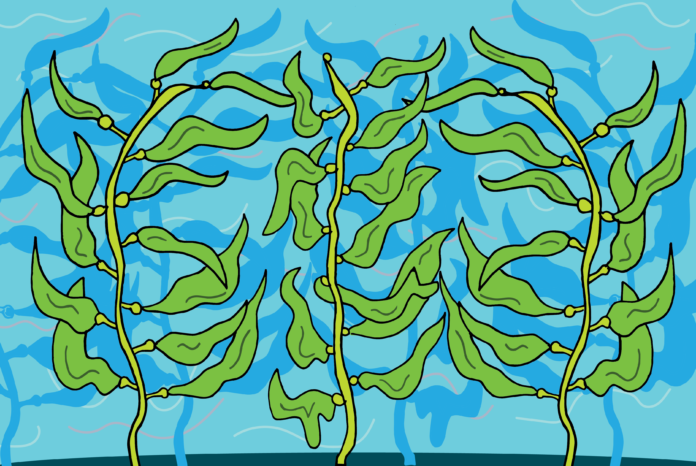Turning hungry sea urchins into delicacies might save kelp ecosystem they threaten to eat away
The odds seem to be against California’s kelp forests and their ecosystems. Not only are rising ocean temperatures making it difficult for the kelp to thrive, but also due to the declining number of starfish and sea otters, the sea urchin population boom is eating away at the ecosystem. This overpopulation is harming even the urchins themselves, who are eating away their habitat, yet still starving because of their vast numbers.
“The kelp forest in California has seen a massive reduction, possibly a 90% reduction in kelp production,” said Karl Menard, aquatic resources manager at the UC Davis Bodega Marine Laboratory. “There’s already been an economical impact because the urchins don’t have significant gonad growth because there’s not enough food for them, so their value and price has dropped significantly.”
Urchin-centered earnings are not the only industry that has been impacted by the loss of kelp forests. Abalone fisheries have also been impacted due to a loss of food sources for the fish. The lack of kelp makes population rebound for the abalone seem unlikely.
“The kelp has crashed in Northern California and has not come back for years now,” said Jordan Hollarsmith, a former graduate student who studied the effects of rising temperatures and ocean acidification on giant kelp populations. “What we’ve seen is a complete ecosystem shift. With that has come huge economic losses for all those little coastal communities that used to have big influxes of people coming to spearfish and abalone dive in those kelp forests.”
On-land urchin ranching has become a potential solution to urchin overpopulation. This technique is different from traditional urchin harvesting, because the urchins available in the sea bed are starved to the level that they have no real market value. Urchin ranching would involve the removal of the creatures from their natural habitat before being placed in a controlled environment. There, they are fed before being harvested for their fleshy roe or inner gonads. The Bodega Marine Laboratory is working with Norwegian-based shellfish company Urchinomics to test the feasibility of such measures.
“Our goal is to restore the kelp forest into vibrant ecosystems by removing overgrazing sea urchins and bulking their roe up in on-land facilities and selling those sea urchins to top tier restaurants globally,” said Denise MacDonald, the director of global marketing for Urchinomics. “The demand [for urchin roe] is growing and the supply is declining. In North America specifically, they’re using it in things like salad dressings and pastas and [other untraditional seafood dishes].”
Turning urchin ranching into a commercial habit will take time and effort. It requires non-traditional diving techniques to procure urchins in a manner that allows survival so that they may be kept in on-land facilities. The urchins are then fed artificial food pellets for 8 to 10 weeks before they can be harvested. Additionally, there is an issue of transportation and the popularization of the method.
“We’re in the final quarter of the one-year feasibility study,” Menard said. “The results are very positive so far.”
The hope is to financially incentivize coastal communities and corporations to harvest from these ‘urchin barrens’ so that overgrazing is controlled and the kelp forests have the opportunity to grow and be replanted.
These advances would in no way be an end-all to the issues faced by California kelp forests. Their decline can be attributed to a series of events, including urchin predator populations, like sea stars, being affected by disease, marine heatwaves, like the Blob, warming the nearshore ocean and mass mortality in red abalone.
“[Urchin ranching] might help people find jobs in sustainable fields, feed people and that’s great,” Hollarsmith said. “I am not convinced right now that it is enough to make any measurable, beneficial impact on the kelp when this looming danger of more marine heatwaves is always on the horizon.”
Urchin ranching is certainly a pathway to begin making a marine impact. If commercialized, a contribution to kelp conservation could be made by simply eating a meal. For a more long-term solution, discussions around the management of marine resources and fisheries are necessary.
Written by: HUSN KHARABANDA — hkhara@ucdavis.edu






